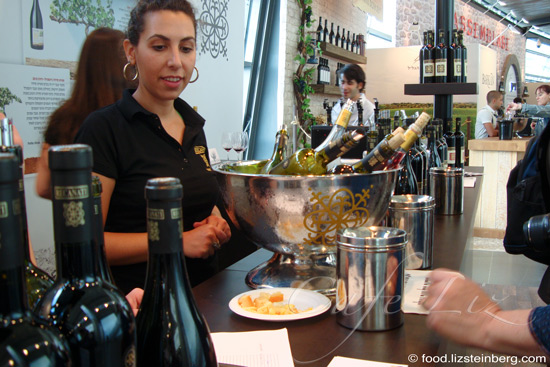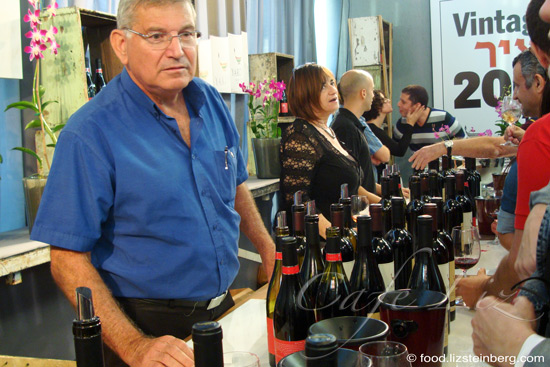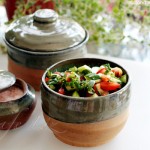Six Israeli white wines I like (and one red)

There are few experiences more fun than a wine expo. Good wine, cheese and a crowd that gets progressively friendlier as the day (and night) wears on. As a bonus, Israeli wines tend to be particularly alcoholic — the climate makes for sugary grapes, which in turn leads to alcohol content of as much as 14% versus 11% to 12% in Europe.
I’d been waiting excitedly for Sommelier 2011, the annual wine expo for the food industry, which was held last week. Dozens of wineries from around the country set up stands to woo restaurants and reviewers with their latest offerings.
More Israeli wineries are offering wines made with grapes beyond Cabernet Sauvignon, Merlot and Chardonnay — there was lots of Malbec, Petit Verdot and Barbera, to name a few. This is a trend I thought I was noticing, and my friend Irene, of the Golan Heights winery, confirmed it — more wineries are trying new things, and some are doing it better than others. For instance, her winery unrolled a wine made from Portuguese grapes, named 2T — for the Touriga Nacional and Tinta Cao varieties.

As usual, there was a surplus of good red wine — lots of wines I’d be happy to drink a glass of, but few of which stood out in my memory. While you could probably taste slight differences if sampling one after the other, I couldn’t describe most of them for you — many would just blend together under the general description of oaky tannins with berries. Irene noted that differentiating between these wines is where real wine expertise comes into play — something I admit I lack.
On the other hand, I can tell you which wines stood out to my non-expert palate. I particularly liked many of the white wines. Mind you, I skipped right over the Chardonnays and Roses and went for the less common varieties, and this list reflects that. Most are midrange in terms of price, meaning 60-70 shekels, and all but those by the Tulip winery are kosher. (Update: Tulip is kosher as of 2010.)

Tulip White 2010 — a blend of 70% Gewurtztraminer and 30% Sauvignon Blanc (OK, I pretty much like any Gewurtztraminer) creates a mix of tropical fruit and crispness.
Tulip Franc 2010 — this wine is made from a mix of Sauvignon Blanc (35%) and Cabernet Franc (65%), which actually happens to be a red grape. But the peels aren’t left in contact with the juice, enabling the winery to make this into a white wine. The winery describes this wine’s flavor as containing strawberries, apples and citrus.
Agur Blanca 2010 — a mix of 55% Viognier and 45% Johannesburg Riesling, this dry wine has a sweet smell — something I like in white wines — and a taste I found grassy and earthy (the winery describes it as dried fruit and citrus).
Yatir Viognier 2009 — I thought this wine had a fruity apple bouquet and a grassy licorice taste, which I found interesting.
Golan Heights Heightswine 2008 — Am I uncreative for liking this wine? It only won top award at the wine “world cup,” as Irene put it. This Gewurtztraminer dessert wine is styled after a German ice wine, but since the climate here is not such that the grapes freeze on the vine, the winery freezes them itself. It’s a very sweet wine, but it has an amazing mix of flavors including tropical fruits, vanilla and flowers. 2008 is on its way out, but later vintages are available.
Binyamina Reserve Gewurtztraminer. Have I mentioned I like Gewurtztraminer? I enjoyed drinking this one too.
And here’s one red wine to end the list: Recanati Reserve 2009 Petite Syrah/Zinfandel. The winery describes it as a characteristic “Israeli” wine, but I think it’s better than average, with a prominent smell of cloves and spices. It’s made from 80% Petite Syrah and 20% Zinfandel.
I was joined at the expo by a great group of bloggers — the usual suspects — some of whom already wrote about the event. You can read Katherine’s blog post and wine reviews, and Yael’s review (translated from Finnish).





